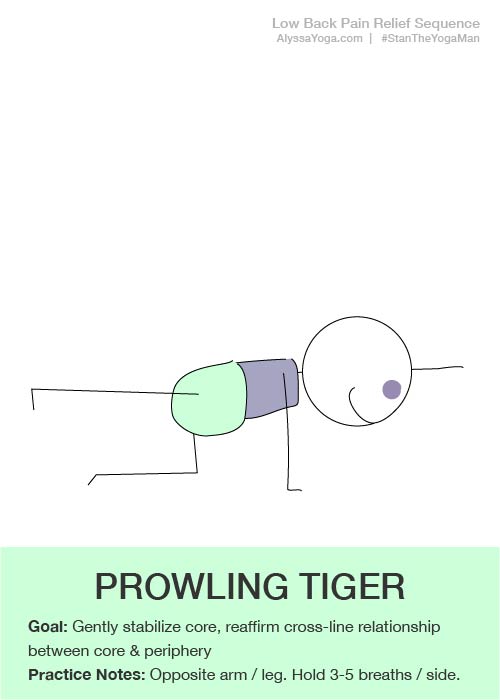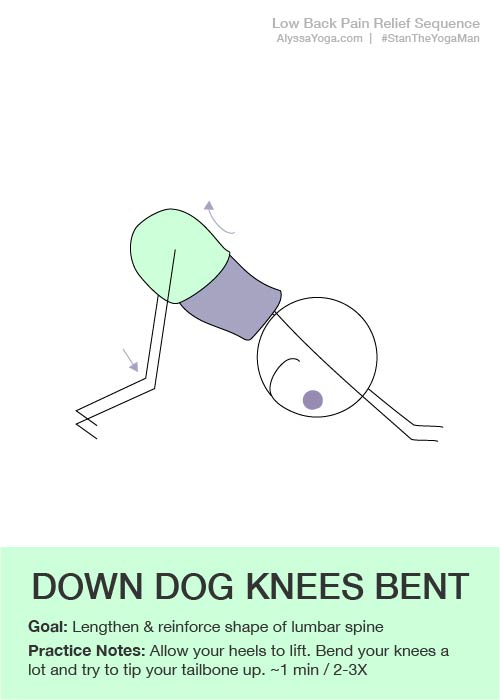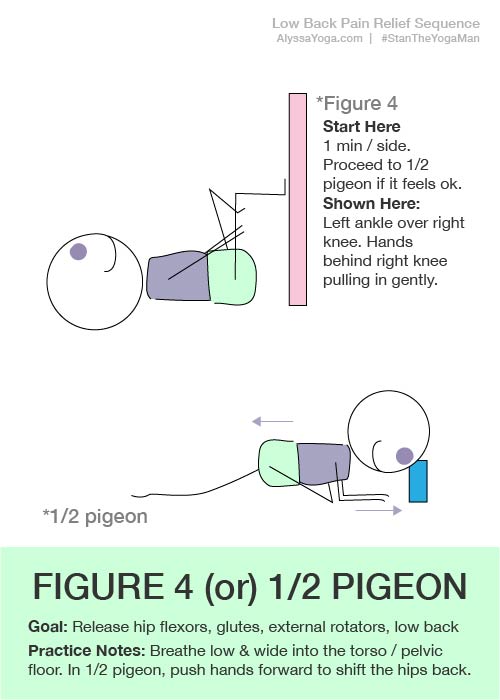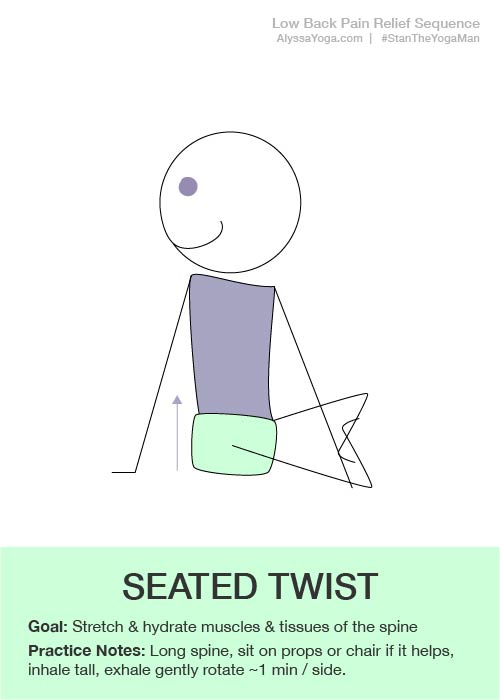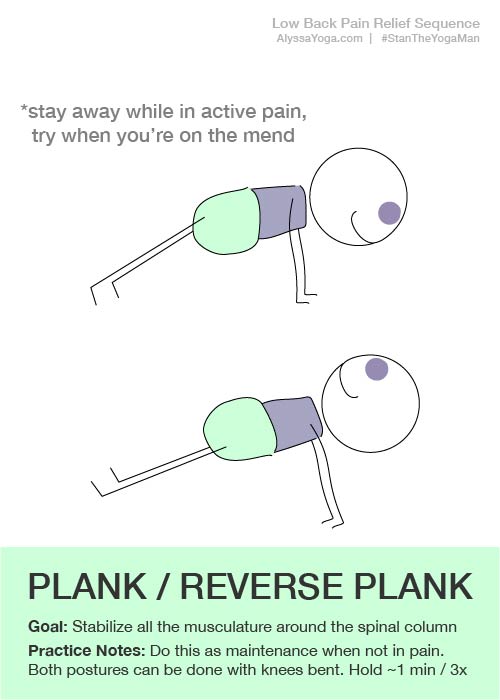My Go To Self Care Regimen for Low Back Pain
If you’ve ever read my bio on a yoga studio website you’ll know that my journey in yoga began when I herniated a disk at L4 / L5 in 2004. In the 14 years since my injury, I’ve worked with doctors, PTs, yoga people, functional movement people and everyone in between to figure out how to heal my pain when it comes back. Granted, if I’m well hydrated, exercising regularly and not under stress - it pretty much never goes out. Buuuut … when I’m over stressed and taking care of others more than myself - my low back pain rears it’s ugly head as my bodies “go to” signal that I need to reel it in and work on self care.
People often ask me what I do when my back goes out. While not for everyone and every circumstance, this is the stuff that works for me. This post is designed to provide first a basic overview and then a more detailed look at what I do. You can skim it and
Note: Before attempting any of this, please see my cautions below.
MY REGIMEN
10-11 minutes of basic yoga poses
10 minutes of simple rolling techniques
Hang upside down for 5 minutes
Ice for 20 minutes / Take Advil / Heat for 20 minutes
Rinse and repeat these steps as often as needed while in active pain (typically 2-3X on day one - less on day two)
YOGA POSES - 11 minutes total
1 min - Cat / Cow (test out where your pain is / what level it’s at - do some self assessment)
1 min - Down dog with knees bent and butt sticking up
1 min / side - Runners / Pyramid Oscillations
2 mins / side - 1/2 Pigeon or figure 4
2 mins - Bridge / Supported Bridge
30 secs / side - sideGentle twisting
When feeling stronger / not in active pain:
1 min / 3X - Plank
30-60 seconds / 3X - Reverse Plank or Reverse Table
ROLLING TECHNIQUES - about 10 minutes
QL Drive
Lumbar Vertical & Horizontal
Piriformis / Glute Rolls
Coregeous on the front & side lines of the body
INVERSIONS - 5 minutes 2-3x / day when in active pain
Whenever my low back goes out, I either get on my inversion table, hang upside down on my aerial swing. These tools are under $100 and can provide tremendous relief. If you’ve never hung on an aerial swing it can be a good idea to try a beginner or gentle aerial class, tell the teacher what you’re dealing with and learn safe methods to enter and exit the hammock. I try to sustain this for 3-5 minutes per inversion and I come back to it 3 times a day when the pain is active. Then 1-2 times a day as my pain is improving. Almost instantly I find some reduction of pain after 1-2 sessions upside down.
YOGA POSES WITH #STANTHEYOGAMAN
VIDEO ONE - THE YOGA POSES (Sorry for the terrible “cover shot” on these videos - ha ha)
VIDEO TWO - THE BALL ROLLING (YouTube makes you wait before they let you customize the “cover photo” … clearly)
OTHER STUFF
Yes, you can do other, simple stuff to support a healthy low back.
Hydrate: You’re made of mostly liquid, the tissues and disks in your back too - when you’re dehydrated - so are they. When they’re dehydrated they can’t move, glide and support the body as they are designed and you’re prone to injury / pain.
Ice / Heat: We all love heat - that’s an easy one. But don’t underestimate the power of ICE when it comes to pain relief and inflammation reduction. It’s PROFOUND. I avoided it for many years because I thought it would be uncomfortable - I now seek it out before I seek heat. I’ll do 20 mins ice / wait 20 mins / 20 mins heat.
Anti Inflammatory: I don’t take a lot of medicine. I like to sense my body and what it needs even if that makes me a bit uncomfortable. But in this instance I can’t argue much with the logic of taking Advil regularly to help with the inflammation around the side of my low back pain.
*** It would be irresponsible to issue this post without a warning. I have a specific diagnosis - herniation at L4 / L5 and a 14 year history of working with physical therapists, trainers, doctors and functional movement specialists towards relief of that particular issue. These are things that work for me - and some of them are great for a good percentage of the population. However, as an example, I worked with a private client who had Spondelylolisthesis where the disk and vertebrae slipped inward towards the front line of the body. In this instance, forward folding was better for him, whereas my strategy for myself and many people could include some form of reverse plank / table or back bending. If you are suffering from active low back pain - get a diagnosis from a kick ass PT or doctor and proceed with laser sharp focus on the feedback you are getting from your body - take what works, back away from what doesn’t. ***


